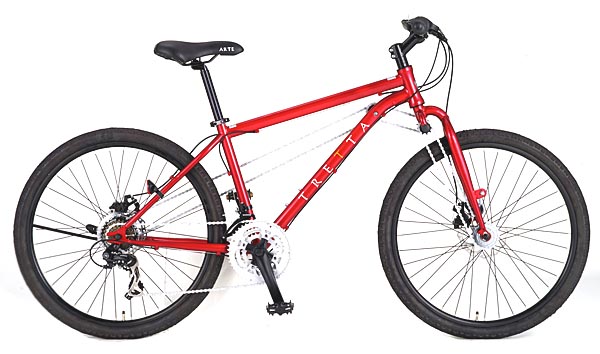With much of Britain in the grip of sub-zero temperatures, many commuter cyclists face uncertain conditions. Those who don’t cycle might assume that a bicycle is the worst possible way to get about in the depths of winter, but this is not the case. Although ice can be treacherous, light snow rarely presents difficulties for the experienced rider.
There are a number or accessories available to cyclists who want to adapt their bikes for snowy conditions, from high-tech all-wheel drive and caterpillar tracks to DIY ice tyres:
2-wheel drive bicycles
Japanese bicycle manufacturer Tretta has recently unveiled a range of 2 wheel drive bikes. The MTB uses an additional – and very long – that chain stretches from the rear hub to a set of small cogs near the top of the down tube. While there are obvious advantages in having a both wheels driven, there are equally obvious questions over the design’s weight and complexity.

Caterpillar-track snow bikes
We at the ETA built the BOND bike as the ultimate urban commuter. It is equipped with a handlebar-mounted flamethrower to stop cars from overtaking too close and a caterpillar track to tackle the worst that frozen, pot-holed roads can throw at you.
DIY ice tyres
Imaginative cyclists are adapting their bikes for use on icy roads by fitting their bicycle tyres with cables ties. The cable ties take only a few minutes to fit and provide impressive traction on the most slippery of surfaces.
The cable ties are inexpensive to buy, and can be fitted to bikes (with coaster brakes) without tools in very little time. It is possible to buy tyres fitted with metal spikes, which give a shorter braking distance than the tyres fitted with cable ties, but can cost around £50 a piece.

Cable ties cost about 3 pence each and each tyre needs around fifteen ties. Once the period of cold weather has passed they can be cut away and discarded.
A spokesperson for the ETA said: “Cyclists tend to be resourceful, but this solution to the problem of icy roads is particularly ingenious.”
The technique is suitable only for bicycles fitted with disc or hub brakes, but it is possible to adapt any bicycle tyre for use on ice by adding pop rivets for less than £2.
Cycle insurance from 40p per week
Cycle insurance from the ETA offers protection for both you and your bike. It includes new-for-old, third party insurance on any bike you ride , personal accident cover, race event cover and if you suffer a mechanical breakdown, we will come out and recover you and your bike.
Rafael
New Bicycles 2×2 WD The Rafael Patino new.inventgmail.com
one video http://www.youtube.com/watch?v=UK0U0IDZx34